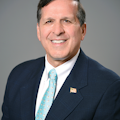Practice production, prioritized: Reducing no-shows
Reducing no-shows easily falls into the top 10 best strategies for increasing practice production. No-shows represent open chair time that can never be filled again. In economics, open chair time would be referred to as a “nonrecoverable resource.” In a dental office, open chair time can lead to the loss of more than $3 million in revenue over the course of a dentist’s career.
Given that most dental procedures fall into a certain range and size in regard to fees, a no-show for most appointments will result in a monetary loss to the practice, because when the treatment is finally performed, the profit of that appointment will not offset the loss in overhead expenses from preparing for two appointments (as the first one was a no-show).
Related articles:
The one-day rule for overdue patients
7 tips to raise production and lower the effects of inflation
Reducing no-shows requires retraining patients. Before beginning a no-show reduction program, which is a system that should exist in every practice, analyze whether the practice truly builds value for each patient appointment. Patients should have a clear sense of why it is important to have a procedure performed and completed before they ever arrive at the front desk for scheduling. This should then be re-emphasized in the handoff from a dental assistant to a front desk person who should emphasize again as he or she schedules the appointment.Once a true sense of value is consistently established as part of the no-show reduction system, there are several steps to impose on violators. The first step is to create a process. Within a written statement, explain the practice’s policy of requiring at least 48 hours’ notice to change an appointment and state that there will be a $100 charge for a missed appointment. The second step comes into play when a patient is a no-show for the first time. The front desk should not reschedule the missed appointment for the immediate future, but push the new date out by several weeks in order to create a sense of demand and value for the practice. The second time a patient misses an appointment in a one- or two-year period, the practice should remind the patient about the $100 missed appointment fee, but not charge them at that time. The third step is to remove patients who have a third no-show within a one- to two-year period. These habitual offenders will continue to cost the practice money and the practice cannot afford to keep them on the patient roster. However, if they call for an emergency, take them in and try to take care of all their needs in one appointment. Otherwise, you know what will happen.
Create a no-show system and implement it as soon as possible. Such a system has the potential to increase practice production by millions of dollars.
Editor's note: This article appeared in the October 2021 print edition of Dental Economics.About the Author
Roger P. Levin, DDS, CEO and Founder of Levin Group
Roger has worked with more than 30,000 practices to increase production. A recognized expert on dental practice management and marketing, he has written 67 books and more than 4,000 articles, and regularly presents seminars in the US and around the world. To contact Dr. Levin or to join the 40,000 dental professionals who receive his Practice Production Tip of the Day, visit levingroup.com or email [email protected].

